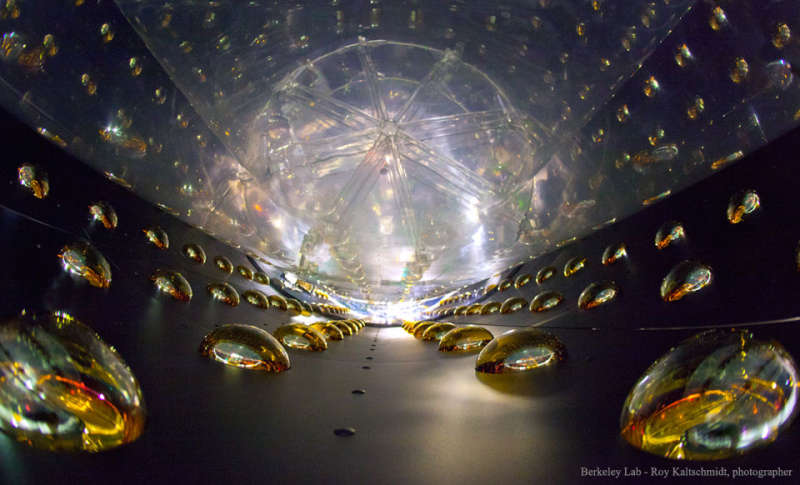Inside a Daya Bay Antineutrino Detector

Explanation:
Why is there more matter than antimatter in the Universe?
To better understand this facet of basic physics,
energy departments in China and the
USA
led in the creation of the
Daya Bay Reactor Neutrino Experiment.
Located under thick rock about 50 kilometers northeast of
Hong Kong,
China, eight Daya Bay detectors
monitor antineutrinos emitted by six nearby nuclear reactors.
Featured here, a camera looks along one of the
Daya Bay detectors,
imaging photon sensors that pick up faint light emitted by
antineutrinos interacting with fluids in the detector.
Early results indicate an unexpectedly high rate of one type of antineutrino
changing into another, a rate which, if confirmed,
could imply the existence of a previously
undetected type of neutrino as well as impact humanity's comprehension of
fundamental particle reactions that occurred within the
first few seconds of the
Big
Bang.
Astrophysicists:
Browse 1,250+ codes in the Astrophysics Source Code Library
Authors & editors:
Robert Nemiroff
(MTU) &
Jerry Bonnell
(USRA)
NASA Web Site Statements, Warnings,
and Disclaimers
NASA Official: Jay Norris.
Specific
rights apply.
A service of:
LHEA at
NASA /
GSFC
& Michigan Tech. U.

